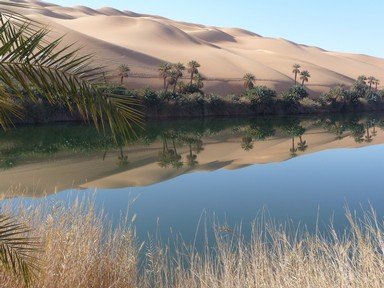Quiz Answer Key and Fun Facts
1. The Sahara Desert covers about 90% of Libya and much of the country is sparsely populated because of this. Prehistoric petroglyphs and pictographs of common African animals found at Wadi Mathendous and the Acacus Mountains demonstrate that this has always been the case.
2. In 630 BCE, the Greeks established a colony in Eastern Libya and founded the city of Cyrene. In the following years four more major Greek cities were founded. This region became known by a Greek name that means five cities. Which Greek word is this?
3. Located near present-day Khoms, Libya in the Wadi Lebda is one of the best preserved sites of Roman ruins in the Mediterranean. This city was the birthplace of the last Roman Emperor from Africa, Septimius Severus. Which place is this that may have been visited by King John in 1215 CE?
4. The Arab Islamic invasion of Libya beginning in the seventh century CE changed the country forever. Which branch of Islam are most Libyans today?
5. The Libyan coast was once a part of which coastal region synonymous with pirates and pirating from the 16th to 19th centuries CE that also shares its name with the red-light district in San Francisco in the 1800s?
6. The "Marines' Hymn" starts with these lines:
"From the Halls of Montezuma
To the shores of Tripoli"
During which war did US Marines first fight on the shores of Tripoli?
7. Which Libyan city was the site of several major battles in World War II because of its strategic importance and geographic location?
8. Libya had a running conflict during the years 1978-1987 with a southern neighbor. Of these four Libyan neighbors, which one was it?
9. Which Libyan city was the seat of the anti-Gaddafi forces during the Arab Spring uprisings and then during the Libyan Civil War in 2011?
10. Which Libyan city was the birthplace of Muammar Gaddafi and the site of one of the last major battles of the 2011 Libyan Civil War?
Source: Author
tazman6619
This quiz was reviewed by FunTrivia editor
Tizzabelle before going online.
Any errors found in FunTrivia content are routinely corrected through our feedback system.

